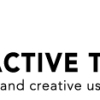
Chris Wilson is dead-on with this post. The web isn’t of the platform, but it can integrate really well and with less friction for our users.
The web… excels at just-in-time interaction, as it IS hassle-free. But it’s a natural progression to enable users to move that onto their home screen, and let them get notifications and other engagement features if they so desire. This is still the web, though – I don’t need to have the NYT app open just to read the article at a link I followed. There are also app-like behaviors you may want occasionally too, e.g. a “what’s near me?” app. There’s an assumption that app-like behaviors demand native, and that the web is for documents.
Note: I no longer use “native” in this context, but it remains in quoted material.






